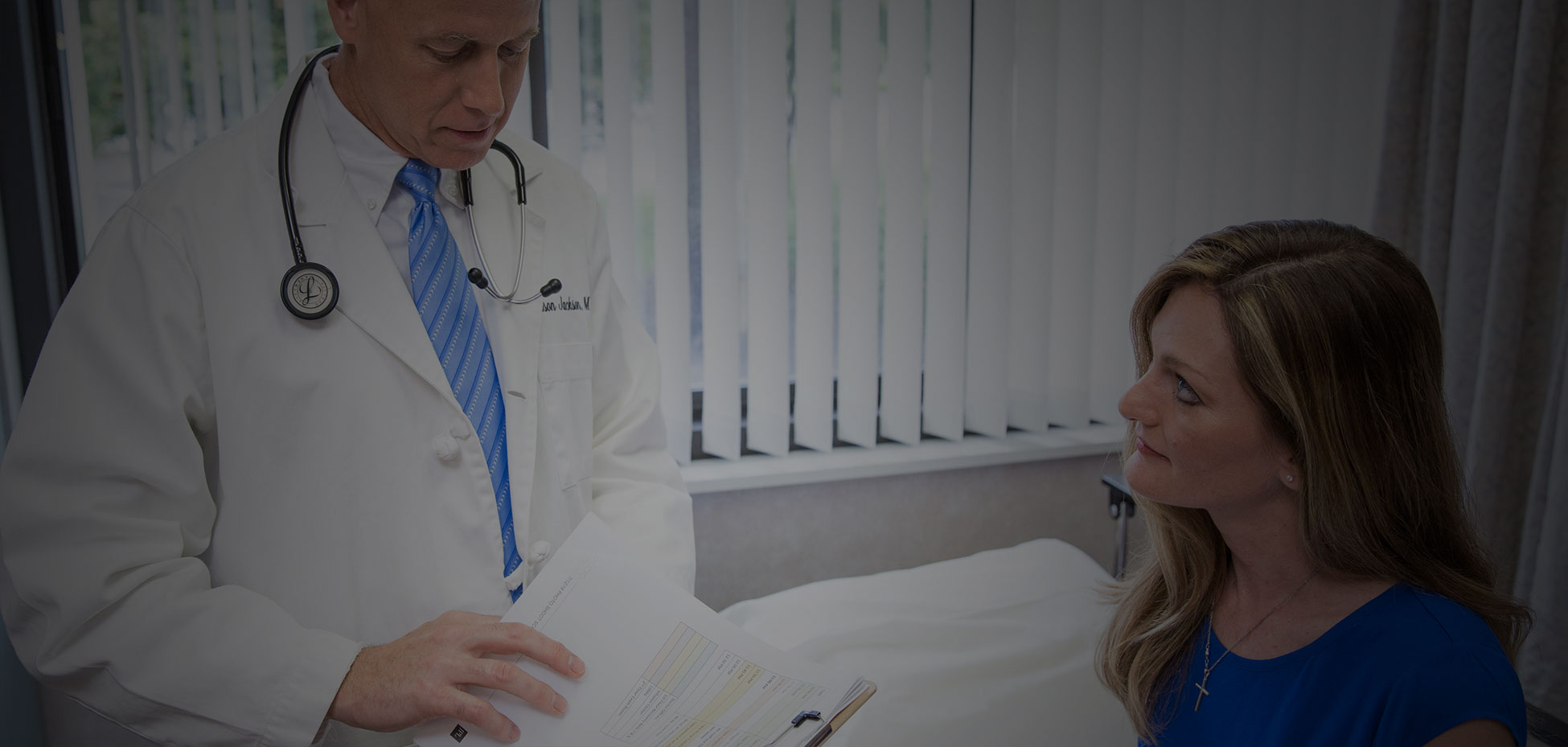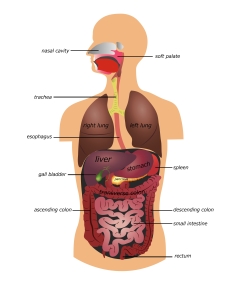Ostomy, Colostomy, Ileostomy
Updated 09/21/2018
Category: Condition
These three words and the images they convey produce dread in many people who may know very little about them. An ostomy is a surgical procedure that creates an opening on the abdominal wall for waste products to move out of the body. It is performed when a medical condition is so severe that an ostomy offers a better alternative. The quality of life is usually much improved for patients with an ostomy, because their previous medical condition was so debilitating.
To really understand an ostomy, it helps to know a little about the body’s anatomy. The gastrointestinal tract begins with the esophagus (the tube connecting the mouth and stomach) and continues through the stomach, small intestine, large intestine (colon), rectum, and anus.
Food is swallowed in the esophagus, mixed and churned in the stomach, and digested and absorbed in the small intestine. The waste leaves the small intestine as liquid. The colon absorbs water from the liquid material and stores the remainder as formed stool until it is passed voluntarily out of the body through the rectum.
What is an Ostomy?
An ostomy is an artificial opening on the abdominal wall through which waste material passes out of the body from the bowel or urinary tract.
What is a Colostomy?
A colostomy indicates that the opening is from the colon. Some type of appliance or bag is required to collect the waste. There are various types of colostomies. The physician and surgeon recommend the appropriate one for each patient.
What is an Ileostomy?
An ileostomy involves bringing the ileum (the last portion of the small intestine) to the abdominal surface. When waste matter reaches the ileum it is liquid, so an appliance is needed to collect it. However, a type of ileostomy called a Koch’s pouch or continent ileostomy does not require an appliance but is done much less often now. The physician and surgeon discuss these choices with the patient.
Why Is an Ostomy Performed?
A number of conditions call for an ostomy as part of the treatment and recovery. These include cancer of the colon and rectum, trauma, malformations present from birth, obstruction of the bowel, complications of diverticulosis, and Crohn’s disease. In each of these, an ostomy may be the best and safest form of treatment. In certain conditions the ostomy may be temporary and can be reversed at a later date. In the past, surgery for ulcerative colitis required a colostomy. Now, a rectal pouch can usually be created out of the small intestine. Liquid stool is then passed through the rectum 3-6 times a day.
The Psychology of an Ostomy
When the physician first mentions an ostomy, every patient, without exception, has negative feelings. The younger the patient, the harder it is to accept an ostomy. There is probably no surgical procedure that produces more misunderstanding and fear than an ostomy.
After the surgery, the patient needs time to heal, to learn how to manage the ostomy, and to mentally adapt to these changes. In time, the patient usually finds that life is only slightly altered, if at all. Most would rather have the ostomy than their previous medical conditions.
Appliances and Care
An appliance is necessary for ostomies. Usually, a bag-like device is applied to the ostomy to collect the waste. It adheres to the body and cannot be seen through clothing. All hospitals and many physicians’ offices have nurse specialists who are extremely knowledgeable about the care of ostomies, and how to treat and prevent their problems. Odor from an ostomy is seldom a problem. Again, assistance is available.
How Does an Ostomy Affect Lifestyle?
Bathing
Tub or shower bathing is done much the same as before the ostomy. If an appliance is used, bathing can be done with or without it attached.
Clothing
Generally, the types of clothing worn before an ostomy can be worn after surgery. Only minor changes may be needed, such as larger pantyhose and panty girdles for women, or a larger athletic supporter for men who exercise.
Exercise
There are few, if any, limitations on exercise and sports. People with ostomies swim, water-ski, play tennis and football, jog, scuba dive, and participate in practically any sport or activity.
Diet
Some minor changes may be required. The patient may find that certain foods and liquids cause diarrhea and/or flatus (gas). He or she then simply avoids these foods. There are many other foods available which work fine with an ostomy. A little experimenting may be necessary.
Sex
A strong, loving relationship always assures satisfactory sexual relations. An ostomy certainly does not make a person less masculine or feminine. The patient’s attitude is very important in maintaining sexual performance. In some cases, professional counseling is necessary, and the physician can assist the patient in obtaining help.
Travel
The only steps needed for traveling are advance planning and packing adequate ostomy supplies.
Social relationships
Each year about 100,000 people of all ages have this surgery. So, chances are you have socialized with people who have ostomies and you didn’t know it. Today’s devices are secure, lightweight, and unnoticeable. Who and what you tell about your surgery is up to you. Remember, this is an alteration to a part of your body. You are the same person, and there is no reason why your relationships with family and friends should change.
Summary
Contrary to common fears, an ostomy almost always improves the quality of life for the patient by correcting the previous serious or debilitating condition. Tens of thousands of ostomy patients attest to the fact that they lead active, stimulating lives, with near normal diets, sex and travel habits.
Additional Help for Ostomy Patients
- Most hospitals have enterostomal therapists. These professionals provide support and assistance for problems that occur with an ostomy.
- The United Ostomy Association, a self-help organization, provides useful information. There may be a local chapter in your area.
Schedule an Appointment
New Patients
Thank you for choosing our practice for all of your GI needs!
Please provide a few details so we can deliver the best care for you.
Current Patients
Please contact our team Monday – Friday between 7:45am and 3:45pm at 717-761-0930 to schedule. Or request an office visit directly through your Patient Portal!
Direct Colonoscopy
Find out if you qualify to schedule your procedure directly, as opposed to first scheduling an office visit.
Complete our quick questionnaire!

Patient Information Center Get all the information you need for your next appointment at Jackson Siegelbaum Gastroenterology.
Prepare for Your Visit
